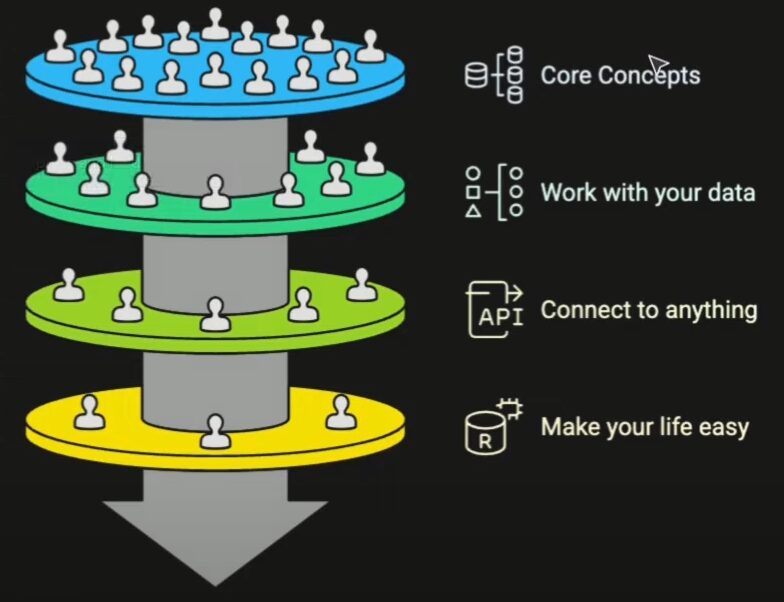Introduction to Business Process Automation
Running a small business can feel like a never-ending juggling act. With limited resources and time, it’s easy for processes to become chaotic, tasks to fall through the cracks, and teams to get overwhelmed. Workflow nightmares are common—whether it’s disorganized task management, miscommunications, or piles of paperwork cluttering your desk. Fortunately, there’s a powerful solution that can transform this chaos into clarity: Business Process Automation (BPA).
Business Process Automation leverages technology to streamline routine operations, reduce manual intervention, and create more consistent, error-free workflows. For small businesses aiming to grow without the burden of inefficiencies, BPA can be a game-changer. In this article, we’ll dive deep into five of the most common workflow nightmares that small business owners face—and how Business Process Automation can eliminate them for good.
How Business Process Automation Streamlines Disorganized Task Management
One of the biggest obstacles to efficiency in small businesses is the lack of structured task management. Employees often juggle multiple responsibilities, and without a clear system, tasks get delayed, missed, or duplicated. Disorganized task management not only hampers productivity but also leads to misaligned goals, frustration, and even burnout.
Business Process Automation changes this entirely by providing a digital framework to organize, assign, and monitor tasks. Through automation platforms like Asana, Monday.com, or Trello integrated with automation tools, business owners can create workflows that automatically assign tasks based on pre-set rules, deadlines, and priorities. This ensures that every task is accounted for and handled by the right person at the right time.
Automated notifications and reminders further support time-sensitive operations, while dashboards offer real-time visibility into project statuses. By automating task allocation and progress tracking, businesses can eliminate the guesswork and minimize human error.
Additionally, BPA makes delegation easier and more transparent. With standardized templates and recurring task setups, you reduce onboarding time for new team members and ensure that routine operations run smoothly even when key personnel are unavailable.
Ultimately, Business Process Automation creates a central, structured task environment where confusion is replaced by clarity—and chaos gives way to control.
Reducing Workflow Confusion Through Business Process Automation Integration
Workflow confusion often arises when multiple systems and tools don’t “talk” to each other. Employees may have to switch between email, spreadsheets, messaging platforms, and CRM systems just to complete a single workflow. This fragmentation results in lost time, reduced focus, and frequent miscommunication.
Business Process Automation eliminates this disconnect by integrating various tools into a seamless workflow. For instance, integrating your CRM with your email marketing tool ensures that contact data, campaign statuses, and customer responses flow automatically between systems. With BPA tools like Zapier, Make (formerly Integromat), or native integrations within SaaS platforms, small businesses can connect hundreds of apps to build unified workflows.
The result? A single action can trigger a chain of automated processes—like updating records, notifying team members, and generating reports—without any manual input. This not only speeds up operations but also reduces the chances of errors caused by double entry or outdated information.
Business Process Automation also enforces consistency across departments. Whether it’s sales, customer service, or accounting, integrated workflows ensure that each team follows standardized procedures, making collaboration more fluid and outcomes more predictable.
In short, BPA brings order to the chaos of disconnected workflows, empowering small businesses to function like well-oiled machines.
Using Business Process Automation to End Document Disarray
Paper trails, scattered digital files, and endless email attachments are not just annoying—they’re workflow nightmares that cost time, money, and sanity. Small businesses often struggle with storing, retrieving, and managing essential documents, which can lead to compliance risks, version control issues, and unnecessary duplication.
Business Process Automation offers a smarter way to manage documents by digitizing and automating the entire document lifecycle. Whether it’s client contracts, internal forms, or invoices, BPA tools can automatically route documents for approval, notify relevant parties, and store them securely in the appropriate folder or cloud system.
For example, an automated invoice approval workflow can extract key information from a scanned document, match it against purchase orders, and forward it to the right manager for digital sign-off—all without a single email. Platforms like DocuSign, PandaDoc, and Dropbox Automation make these tasks effortless.
Moreover, BPA ensures that document access is controlled and traceable. Audit trails are generated automatically, improving accountability and data security. This is especially critical for small businesses operating in regulated industries.
The result is a streamlined, searchable, and compliant document management system where information is always where it should be. No more wasting time chasing down files or deciphering handwritten notes—Business Process Automation takes care of it all.
Fixing Inconsistent Customer Follow-Ups with Business Process Automation
Customer follow-ups are a vital part of relationship building—but they’re often inconsistent in small businesses due to time constraints and lack of systemization. Missed follow-ups can lead to lost sales, diminished trust, and a poor brand reputation.
With Business Process Automation, follow-ups become timely, personalized, and consistent. For instance, when a lead fills out a contact form, an automated workflow can immediately send a personalized email, schedule a follow-up call, and alert the sales team. CRMs like HubSpot, Zoho, and Salesforce allow small businesses to automate these sequences based on behavior, timing, or deal stage.
Automation also enables ongoing engagement. Thank-you emails, check-in messages, upsell offers, and review requests can all be pre-scheduled and triggered based on customer actions. This not only nurtures relationships but also increases lifetime customer value.
Even more powerful is the data tracking that comes with BPA. You can monitor open rates, response times, and conversion rates to fine-tune your outreach. This level of insight was once reserved for large enterprises, but now it’s accessible to small businesses thanks to automation.
By eliminating manual follow-ups, Business Process Automation ensures that every customer feels seen, heard, and valued—without overwhelming your team.
Business Process Automation and the Elimination of Data Entry Disasters
Few tasks are more tedious—and more prone to errors—than manual data entry. From typing customer details into spreadsheets to updating inventory records, small business teams often waste hours on this low-value activity. Worse, a single typo can lead to costly mistakes.
Business Process Automation completely redefines data handling by minimizing manual input. With tools like optical character recognition (OCR), form automation, and API-based data syncing, BPA can capture and transfer information with pinpoint accuracy.
For instance, data from a customer intake form can be automatically populated across multiple systems—CRM, email marketing, billing—without anyone having to retype it. Inventory updates can be synced in real-time across sales platforms, reducing stockouts or over-ordering.
Additionally, BPA can validate data as it’s entered, flag anomalies, and ensure formatting consistency. This improves data quality, enhances analytics, and supports better decision-making.
Most importantly, automating data entry frees your team to focus on strategic tasks like customer engagement, innovation, and growth. It’s about shifting from busywork to meaningful work.
For small businesses, this shift can be revolutionary. Business Process Automation not only eliminates the nightmare of data entry errors—it unlocks a new level of operational excellence.
Conclusion
Workflow nightmares can quietly sabotage your small business—draining your resources, stressing your team, and stalling your growth. But they don’t have to be part of your story. With Business Process Automation, you can replace chaos with clarity, inefficiencies with precision, and stress with streamlined success.
From managing tasks and documents to improving customer interactions and eliminating data errors, Business Process Automation empowers you to build a business that’s not just productive, but also proactive. It levels the playing field, giving small businesses the tools to operate with the efficiency of much larger organizations.
Now is the time to embrace automation not as a luxury, but as a necessity. Say goodbye to workflow nightmares—and hello to the future of streamlined business operations.
Ready to bring calm and structure to your business? Call CCAi365 today at 252-668-1640 — we’re here to help you thrive!


